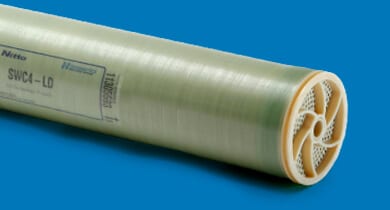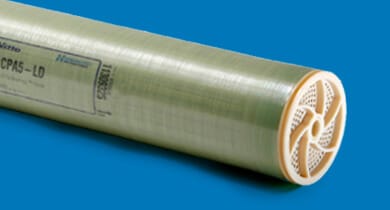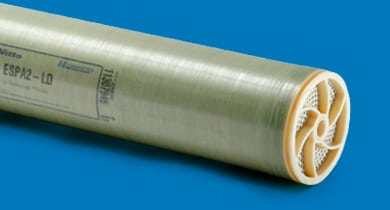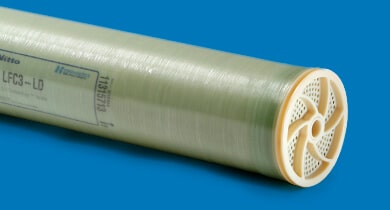Reverse osmosis is a process that removes particles having with a molecular weight cutoff of 100 to 200. This process is perfect for removing substances such as: metal ions, acids, sugars, dyes, natural resins and ions. Hydranautics’ RO membrane offers various degrees of flux and rejection characteristics, specifically suited to treat multiple and diverse water treatment applications.
SWC (Sea Water Composite)
As the world is facing freshwater scarcity, Hydranautics brings a range of SWC RO membranes to meet the demands of desalination industry. SWC membranes have improved the productivity and salt rejection for more than two decades while reducing their environmental impact. SWC membranes come in a range of innovative formulations depending on the level of seawater salinity required.
CPA (Composite Polyamide)
Ultrapure water is essential in several industrial applications. CPA RO membranes are regarded as the industry standard for all critical high purity applications – from pharmaceutical to power industry. CPA lines of spiral-wound RO membranes are available in a variety of sizes and deliver unmatched performance with the highest salt rejection rates.
ESPA (Energy Saving Polyamide)
Energy required to pressurize RO feed water is the largest contributor to the total energy consumption of the RO plant. As a result, chlorine tolerant membranes have helped the membrane technology become affordable and cost effective by reducing energy consumption required to operate RO system. ESPA membranes are the choice for applications demanding high-energy efficiency, with uncompromised productivity and salt rejection.
LFC (Low Fouling Composite)
LFC3-LD from the LD Technology™ innovative low fouling membranes combines the attributes of a neutrally charged surface with hydrophilicity to achieve the lowest organic and colloidal fouling in the most demanding feed water conditions. Combining the attributes of a neutral surface charge and hydrophilicity, LFC3-LD provides significant reduction in fouling rates increasing the membrane’s efficiency by restoring nominal performance after cleaning.





